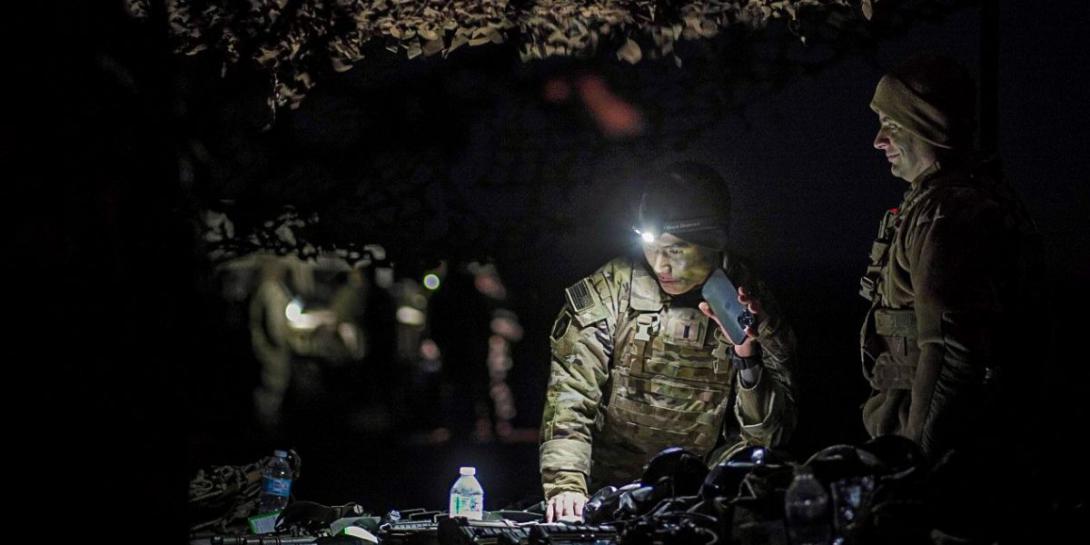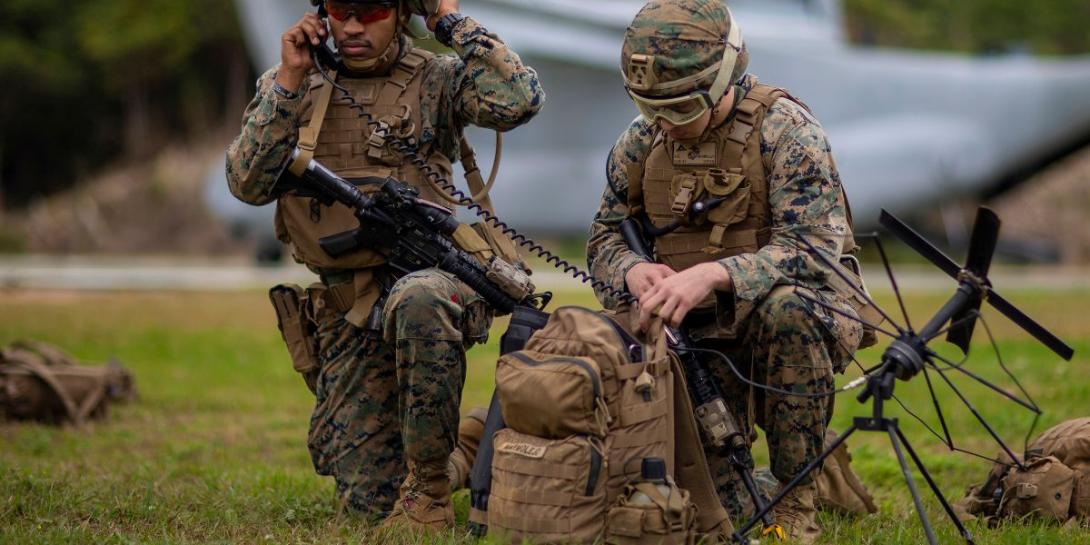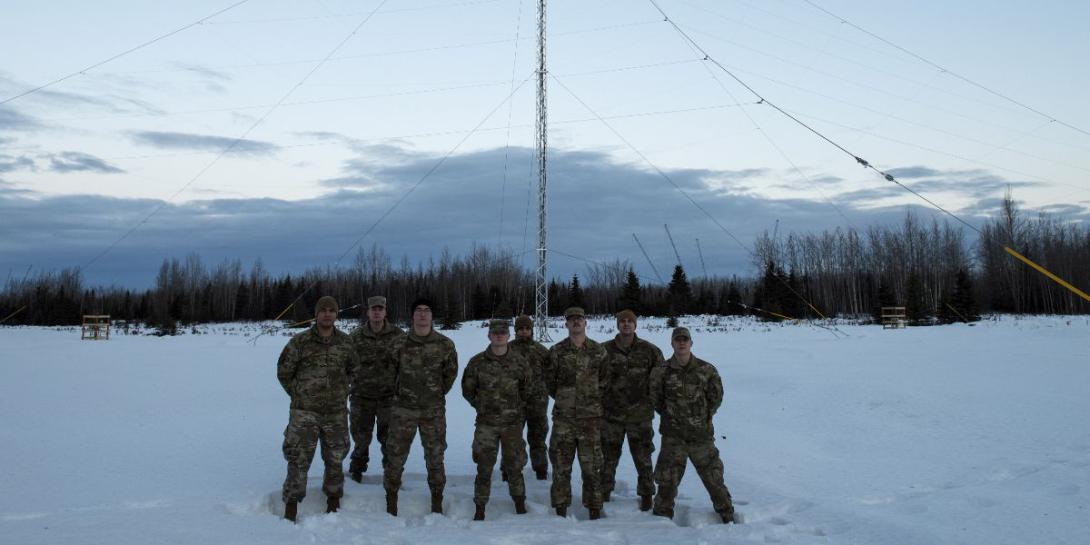HF Receives New Life in Indo-Pacific
The U.S. military is returning to an old friend to help conquer the tyranny of distance in an increasingly contested area. The Defense Information Systems Agency is working with its forces in the Indo-Pacific region and around the world to bring back high-frequency radio communications as a key link for operations in potentially difficult or denied environments.
With an area of operations covering half the Earth’s surface, the Indo-Pacific region in recent years has relied extensively on satellite and undersea fiber links to connect diverse locations. But space assets are increasingly vulnerable both to space conditions and enemy action in orbit and on the Earth, and fiber cables on the sea bed can be damaged accidentally by anchors or deliberately by adversaries operating undersea systems in shallow waters. High-frequency (HF) radio can provide over-the-horizon communications connectivity without need of a fragile infrastructure, and the increasing threats to other systems in the Indo-Pacific region have brought it back to prominence.
One Defense Information Systems Agency (DISA) official described the resurgence of HF as coming big and moving fast. Coupled with the next generation of HF capabilities, such as wideband HF and various waveforms, HF now is looming as a redundant capability.
HF is not a panacea for replacing satellite or fiber, DISA officials say. It does not have the data rate the other two media provide, so users will not have the same level of throughput they can obtain from a satellite or fiber optic cable. U.S. forces will need to be certain that U.S. personnel are trained to be able to communicate using short bursts of information. They will have less bandwidth but the same connectivity with HF communications.
The Indo-Pacific Command (INDOPACOM) J-65 office has its Indo-Pacific Relief Network, or IPRN, through which the command is working with several mission partners for HF on humanitarian assistance and disaster relief (HADR). Using a transmitter site at Wahiawa, Oahu, the office is testing data, voice and automatic link establishment (ALE) across the Pacific region into Fiji, Malaysia, Australia, Dakar, Singapore and other places, a DISA official notes. This effort includes twice-yearly exercises.
The Air Force’s 644th Combat Communications Squadron on Guam is working with the Air Force High Frequency Global Communications System (HFGCS) activity, which consists of single sideband short wave transmitters. This effort aims at passing voice communications from a tactical PRC-160 radio into the Defense Switched Network, the DISA official adds.
Bruce A. Morgan is the deputy commander, DISA Pacific Regional Field Command, Cyberspace Operations Directorate, DISA Operations and Infrastructure Center. He allows that the J-65 is integrating various communications across the Pacific into the annual Pacific Endeavor interoperability exercise. This effort includes integrating some newer technologies into the HF mix to increase its functionality and reliability for basic data transmission communications, even beyond the threat to satellite and optical fiber communications. “We are certain to see more involvement and use of proof-of-concepts and experiments in exercises,” he says. They are likely to be small scale and relatively informal, he adds.
Col. Jack Sander, USA, special adviser, Cyberspace Operations Directorate, DISA Operations and Infrastructure Center, offers that HF radio operations are uniquely suited to overcome the tyranny of distance that characterizes the Indo-Pacific region. It can traverse much greater distances than any other type of radio wave propagation in the Defense Department inventory.
The colonel continues that the primary, alternate, contingency and emergency (PACE) plan for communications assigns terrestrial fiber as the primary medium. The alternate is strategic satellite communications (SATCOM), and the emergency would be HF. It would enable forces to connect back to enterprise services at the strategic level on the Department of Defense Information Network (DODIN).
“If something happens to those terrestrial links or that strategic SATCOM, you could still access the DODIN back to [continental United States] with HF radio signals,” Col. Sander offers. Morgan notes that HF allows adding survivability and assured connectivity to the mission partner engagement that is a goal of INDOPACOM.
Col. Sander is blunt about the need for HF. “If there is a future conflict in the INDOPACOM area of operations, the cyberspace portion is going to be increasingly contested,” he predicts. “We know we are not going to be able to operate on our terrestrial fiber optic leases or our commercial SATCOM because they are going to be jammed. They are going to be degraded. They are going to be susceptible to submarines cutting the cables. So, we are already in that contingency/emergency part of our PACE plan, so HF will be another tool in the kit bag that the warfighter can use in an environment where all communications are degraded.”
Core HF is drawing from existing off-the-shelf systems, but new technologies will be integrated, especially those from the commercial sector. The Joint Interoperability Test Command (JITC) is partnered with the U.S. Cyber Command to view emerging technologies and incorporating them into Defense Department modernization programs.
Next-generation HF is heading toward wideband, or high-speed, HF for higher capacity connectivity. A DISA official says that under perfect atmospheric conditions, this HF connectivity could provide full-motion video. Vendors are building radios for that, and the department is buying these next-generation radios. These include the Collins RT-2200A and Harris PRC-160, the official notes.
Col. Sander says that having a full-motion video capability will enable airborne intelligence, surveillance and reconnaissance feeds from unmanned aerial vehicles and aircraft. This will enable soldiers on the ground to see the enemy over the near horizon, and it will assist in HADR operations as well. “Knowing where you can and cannot land supplies after an earthquake … is another application,” the colonel adds.
And a HADR operation may be the best testbed for HF over the vast region. Those types of operations tend to occur frequently across the area, and Morgan offers that it is the type of partner engagement that INDOPACOM emphasizes. Col. Sander agrees that HADR would present an opportunity for HF exploitation.
Morgan notes that software now can provide ALE and enable prioritization for determining which communications path is open, even at the router level. “We’re putting a lot of intelligence into some of these devices to almost treat it like [Internet protocol],” he reports. “You send out chunks of it and put it back together at the distant end, and it can get there in a variety of media. That, to me, is the excitement that I see in HF.
“Our ability to use this to compound and build on our capabilities for reliable and survivable communications is exciting,” he declares. Col. Sander notes that DISA and the JITC are working with ALE, which automatically selects a frequency match for linkup as part of an effort to apply commercial technology to solve the tyranny of distance problem within INDOPACOM.
The Fully Networked Command and Control Capabilities (FNC3) effort at the Defense Department is part of next-generation HF modernization within the department, the official continues. The research and engineering office in the department is looking toward the JITC to build a reference implementation laboratory for testing and certifying new waveforms from industry or federal laboratories.
The JITC also is looking at the interoperability of the chat programs from various vendors. Many of these are proprietary, and the radios must work together irrespective of the vendor.
Some issues remain to be overcome. Many nations in the vast region have allocated HF frequencies to government or commercial needs, and this could be a source of bandwidth conflict. “We’re not like NATO, where we have agreements that are multilateral,” Morgan observes. “We do a lot of HADR on a country-by-country coordination basis, which adds time to the overall relief effort.” He relates that efforts through Pacific Endeavor aim to formalize sets of common agreed-upon frequencies that can be used.
An INDOPACOM effort known as the Multinational Communications Interoperability Program (MCIP) is coordinated by the senior -6s from various countries around the Pacific Rim. At Pacific Endeavor, they discuss the HF communications operations, a DISA official observes. The DISA Pacific staff works with INDOPACOM on interoperability, Col. Sander adds.
Some of the HF radios used by partner nations may not be next-generation-compliant radios, the official notes. Even new radios may not have the next-generation capabilities incorporated into them by their vendors. That is one of the issues that can be addressed by Pacific Endeavor, Morgan reports.
Ultimately, HF could evolve into another set of communications and not just the last option in a PACE plan, Morgan suggests. This would entail having partners use HF regularly instead of just during special circumstances.
Exercises are the primary means of coordinating HF efforts with partners, he continues. These provide opportunities to test both technology and interoperability. In August, the 644th on Guam is connecting its home of Anderson Air Force Base with bases in Alaska, Hawaii and Okinawa. He adds that DISA Pacific is working to deploy HF radios in Schofield Barracks in Hawaii as a step for establishing persistent communications and messaging.
For the near term, HF will be applied more within bilateral and multilateral security exercises with partner nations, Col. Sander reports. As emerging technologies are incorporated further—and as the Defense Department installs overseas cloud access points and data centers—advanced HF radios will be able to access those elements. This would become feasible over the next five to 10 years, he estimates.
“Long-term, even if INDOPACOM is cut off from the continental United States, you would still be able to access overseas data centers through cloud access points and everything you needed from an enterprise perspective to be successful, whether it was an [HADR] or actual combat operations,” the colonel declares.
Morgan views HF as a big gain for the warfighter amid the digital modernization being pushed by the Defense Department. Warfighters don’t care what medium they’re using to get their information through, he notes, and INDOPACOM is aware that adversaries have the ability to disrupt or degrade communications. “We look at HF as something more reliable that just needs to be brought into that digital age,” he observes.
Then there are the polar regions, which lack SATCOM or large pipes of terrestrial fiber. The north polar region in particular is becoming more contested, and HF has no limitations at high latitudes. Morgan notes that DISA is taking a fresh look at media to invest more technology and software to make it more of a day-to-day medium of communications.
And HF can survive environmental issues better than alternatives. When a satellite is taken out, it is gone forever. On the other hand, when the ionosphere becomes disturbed, it always reconstitutes itself.







Comments